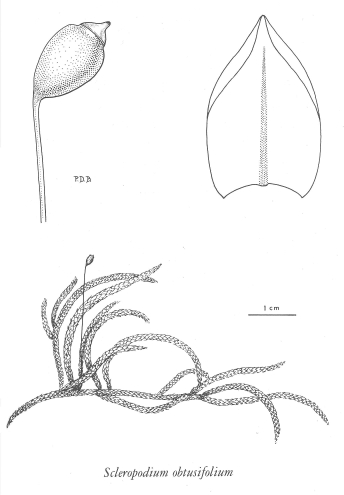E-Flora BC: Electronic Atlas of the Flora of British Columbia
Scleropodium obtusifolium (Jaeg. & Sauerb.) Kindb. ex Mac. & Kindb.
blunt-leaved moss (obtuseleaf scleropodium moss) Brachytheciaceae Species Account Author: Wilf Schofield Extracted from Some Common Mosses of British Columbia Introduction to the Bryophytes of BC
|
|||||||||||||
